Amritsar, nestled in the heart of Punjab, isn’t just a place you visit, it’s an experience that stays with you. This vibrant city, also known as the “Golden City,” weaves together a rich tapestry of history, spirituality, and culture. Here, centuries-old traditions come alive, and the iconic Golden Temple serves as a gateway to the soul of Sikhism. Prepare to be enveloped by the warmth of Punjabi hospitality as you embark on a journey that will resonate deeply.
But Amritsar’s magic extends far beyond its spiritual allure. A fascinating blend of historical landmarks, bustling markets, and mouthwatering cuisine awaits. Each corner whispers tales of resilience, cultural pride, and unwavering faith.
How to reach:
Soaring Through the Skies: Sri Guru Ram Dass Jee International Airport (ATQ) welcomes you to Amritsar with ease. Situated just 11 kilometers northwest of the city center, this airport boasts regular flights from major Indian cities like Delhi and Mumbai, as well as international destinations like Dubai, Doha, and Birmingham. Upon arrival, taxis and prepaid cabs ensure a smooth transition into the heart of Amritsar.
A Journey by Rail: Prefer a more traditional and scenic route? Amritsar Junction Railway Station, a major North Indian hub, offers excellent connectivity. From high-speed express trains like the Shatabdi Express to the historic Golden Temple Mail, reaching Amritsar by train is a comfortable and convenient option. The station’s central location makes exploring the city a breeze. Hop on an auto-rickshaw, hail a taxi, or experience a traditional cycle rickshaw ride to reach your chosen destination.
Hitting the Open Road: Craving the freedom of the open highway? Amritsar’s network of national highways awaits. State-run and private buses become your reliable companions, ferrying you to neighboring cities like Delhi, Chandigarh, and Jammu.
Best time to visit:
Pleasant Winters (October to March):
- Weather: Embrace the comfort of mild days with temperatures ranging from a crisp 5°C to a balmy 20°C (41°F to 68°F). This makes sightseeing a delightful experience, free from the scorching sun.
- Festivals: Immerse yourself in the vibrant spirit of Sikh festivals like Guru Nanak Jayanti and the Sikh New Year (Guru Gobind Singh Jayanti), where the Golden Temple comes alive with joyous celebrations.
- Top Picks: Explore the magnificent Golden Temple and other historical landmarks without breaking a sweat. This is the perfect time to delve into Amritsar’s rich heritage.
Hot Summers (April to June):
- Weather: Be prepared for the heat! Temperatures can soar up to 45°C (113°F) in May and June, making outdoor activities quite challenging.
- Travel Tip: If you must visit during summer, plan your sightseeing for the cooler mornings or evenings to avoid the brunt of the heat.
Monsoon Rains (July to September):
- Weather: Amritsar receives a welcome break from the summer heat with monsoon showers arriving in July and lasting until September. However, expect occasional heavy downpours.
- Travel Tip: The city transforms into a lush green paradise during the monsoon. While it’s a great time to witness this transformation, be prepared for potential disruptions due to rain and plan for indoor activities on some days.
Attractions:
Golden Temple, Amritsar:
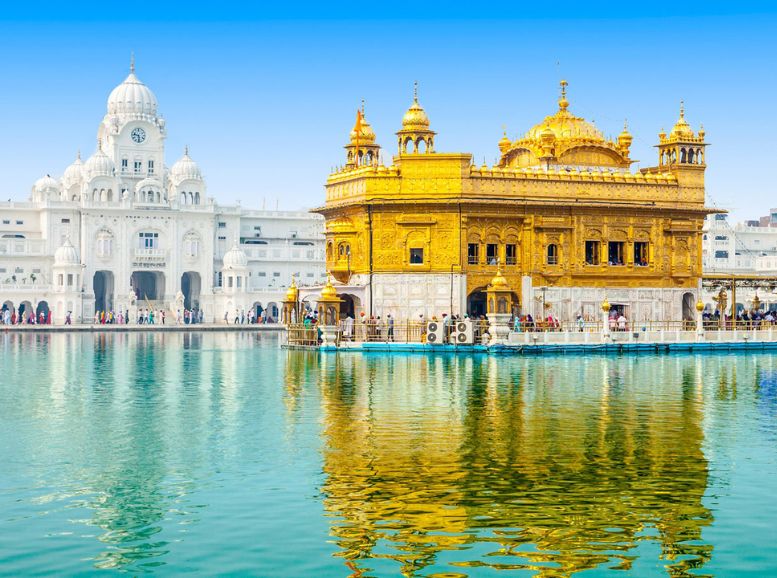
The Golden Temple, situated in the bustling city of Amritsar, stands as a radiant beacon of Sikh faith and universal harmony. Adorned with gleaming golden domes that reflect the sunlight, this sacred shrine captivates visitors with its awe-inspiring beauty and spiritual ambiance. Encircled by the tranquil waters of the Amrit Sarovar, or Pool of Nectar, the temple complex offers a serene sanctuary for pilgrims and seekers alike. At its heart lies the Guru Granth Sahib, the eternal Guru of Sikhism, revered by devotees who gather to pay homage and seek spiritual guidance. The Golden Temple’s renowned langar, or community kitchen, exemplifies the Sikh principles of equality and service, offering free meals to all regardless of background.
Jallianwala Bagh, Amritsar:
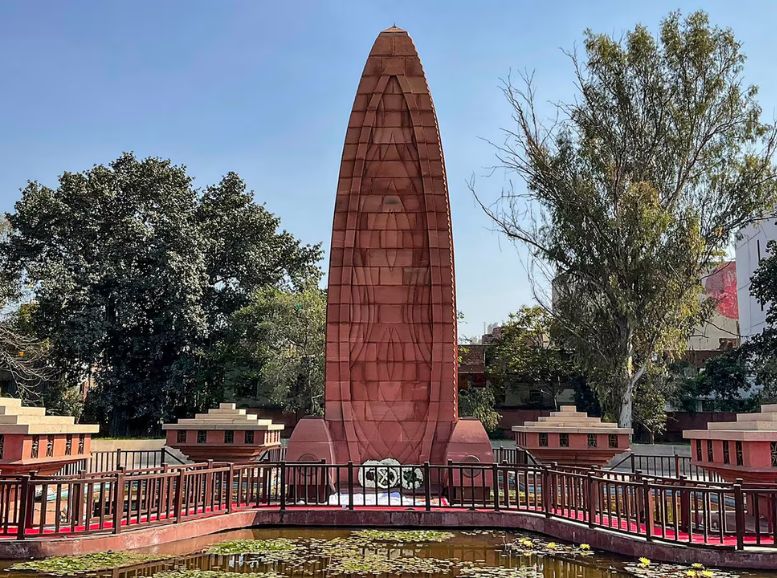
Jallianwala Bagh, nestled in the heart of Amritsar, stands as a solemn memorial to one of the darkest chapters in India’s struggle for independence. Enclosed by high walls, this serene garden witnessed the brutal massacre of unarmed civilians on April 13, 1919, under British colonial rule. The tragic event unfolded when British troops, under the command of Colonel Reginald Dyer, opened fire on a peaceful gathering of men, women, and children who had assembled to protest against oppressive laws.
Wagah Border:
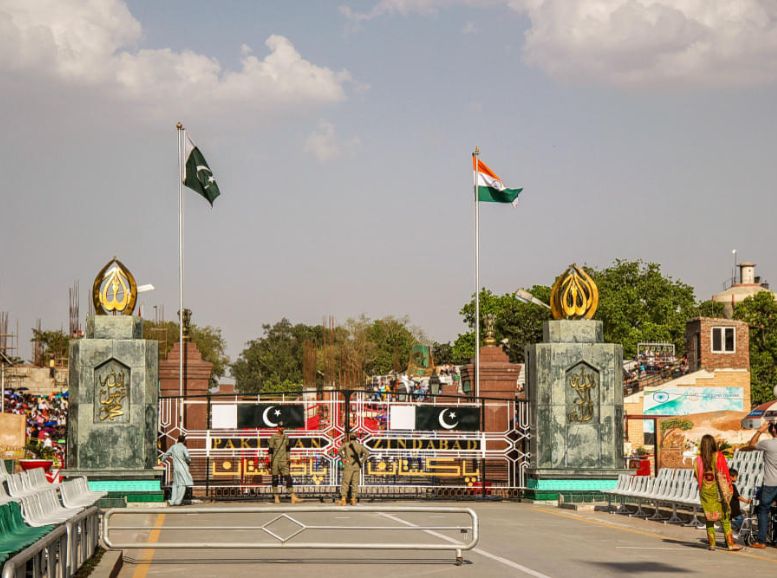
The Wagah Border, situated near Amritsar in Punjab, serves as a symbolic gateway between India and Pakistan, embodying both the tensions and the camaraderie between the two nations. Every evening, a vibrant ceremony known as the “Wagah Border Ceremony” takes place, attracting throngs of spectators from both sides who gather to witness the elaborate military drills, spirited patriotic displays, and the lowering of the national flags. The atmosphere is charged with energy and national pride as soldiers from both countries engage in synchronized movements and spirited competitions, culminating in a powerful display of unity and brotherhood despite historical conflicts and political differences.
Partition Museum:
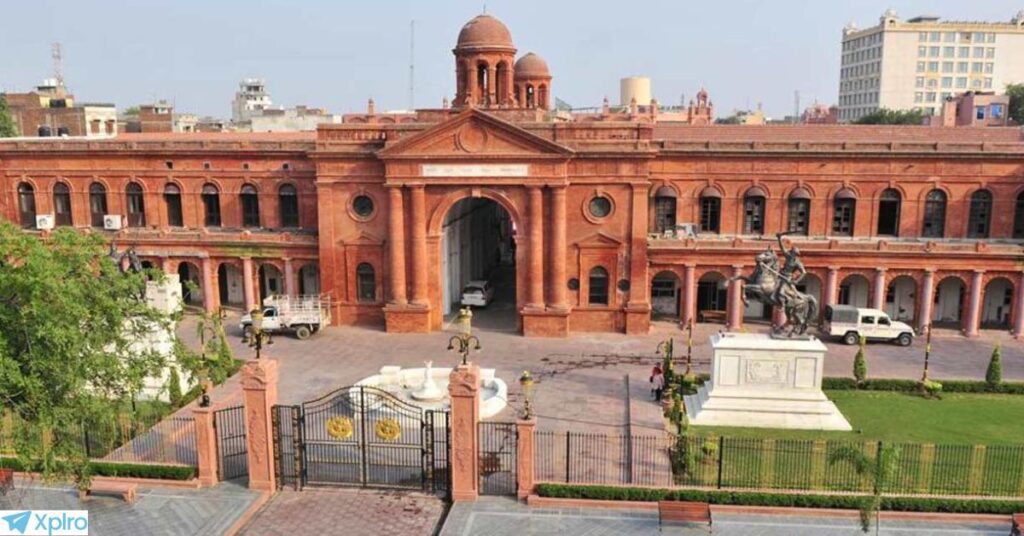
In the heart of Amritsar, housed within the historic Town Hall, lies a museum unlike any other. The Partition Museum isn’t a collection of dusty relics, but a poignant tapestry woven from the stories of millions. It’s a tribute to those impacted by the 1947 partition of India, a human drama that unfolded as one of the largest mass migrations in history.
Step inside, and personal belongings whisper tales of separation. Oral histories, etched with the pain of loss and the quiet strength of resilience, come alive. Photographs capture a bygone era, a world forever fractured. Artifacts, imbued with the weight of history, become tangible reminders of a time of upheaval.
Akal Takht, Amritsar:
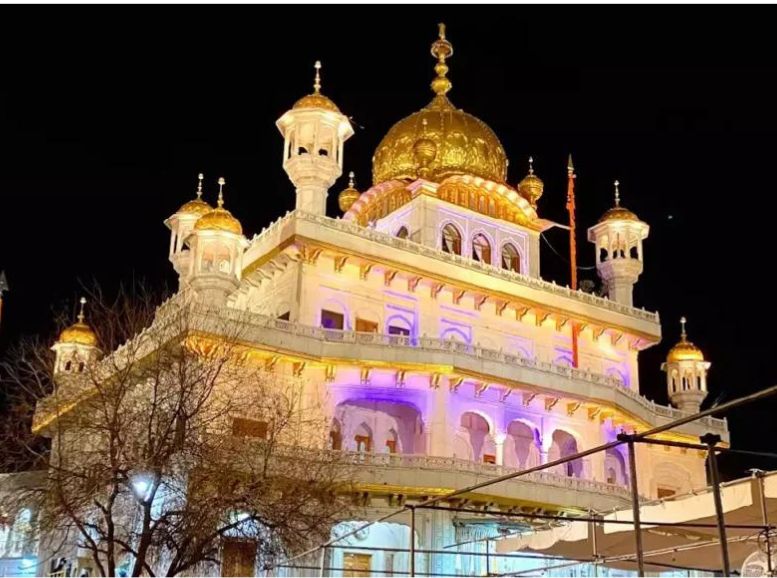
Located within the revered Golden Temple complex, the Akal Takht stands as a symbol of temporal authority and spiritual sovereignty in Sikhism. As one of the five Takhts or seats of power, it holds immense significance for Sikhs worldwide, serving as a platform for addressing matters of religious, social, and political importance. The Akal Takht commands respect and reverence, embodying the principles of justice, equality, and righteous governance upheld by the Sikh Gurus. Visitors to Amritsar often pay homage to this sacred institution, seeking spiritual guidance and inspiration from its hallowed halls.
Pul Kanjri, Amritsar:
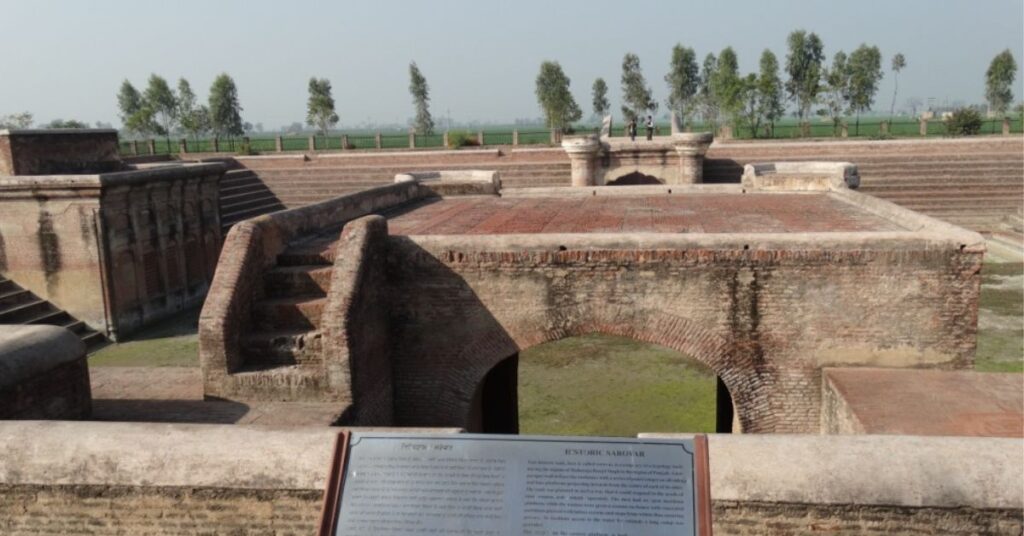
Pul Kanjri is a historic site located on the outskirts of Amritsar, immortalizing the legacy of Maharaja Ranjit Singh, the Lion of Punjab. This picturesque complex features a beautifully preserved monument, an ancient water reservoir, and lush gardens adorned with ornamental fountains. Pul Kanjri holds historical significance as a rest stop for travelers and traders crossing the Beas River, as well as a retreat for Maharaja Ranjit Singh during his military campaigns. Visitors are enchanted by the tranquil ambiance of Pul Kanjri, which transports them to a bygone era of royal splendor and cultural vibrancy.
Maharaja Ranjit Singh Museum, Amritsar:
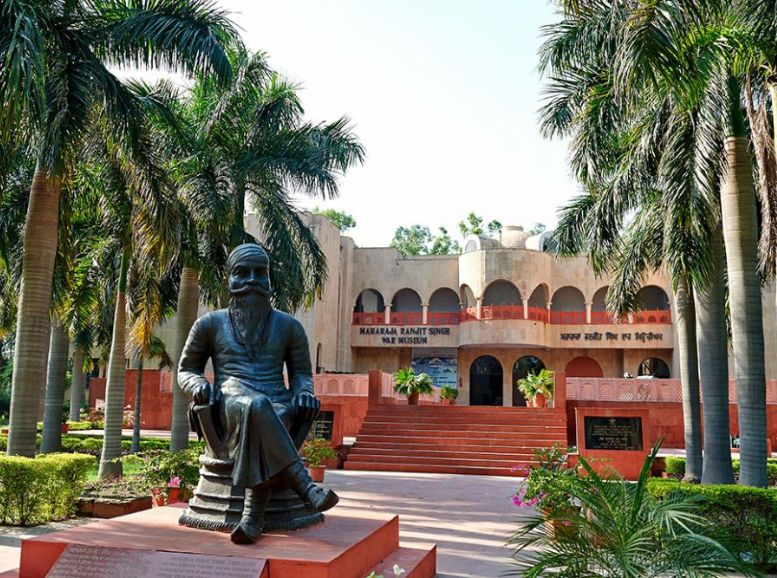
The Maharaja Ranjit Singh Museum in Amritsar is a treasure trove of artifacts and memorabilia that chronicle the life and reign of Maharaja Ranjit Singh, the founder of the Sikh Empire. Housed within the majestic Ram Bagh Palace, the museum showcases a remarkable collection of paintings, weapons, coins, and personal belongings of the legendary ruler. Visitors can immerse themselves in the history and legacy of Maharaja Ranjit Singh, gaining insights into his military prowess, administrative acumen, and patronage of the arts.
Gobindgarh Fort, Amritsar:
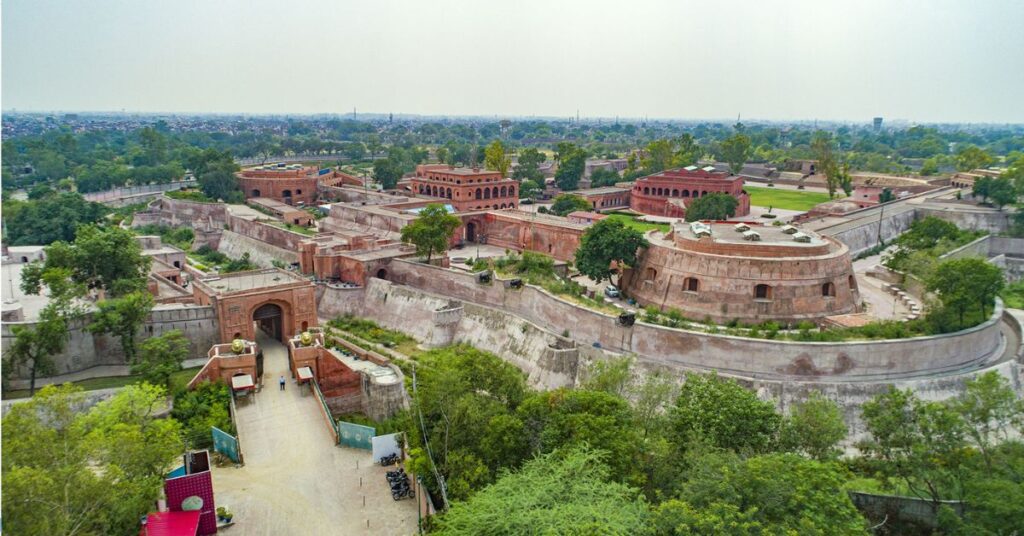
Gobindgarh Fort, located in the heart of Amritsar, is a historic fortress that has witnessed centuries of Punjab’s tumultuous history. Originally built by Maharaja Gujjar Singh in the 18th century, the fort was later renovated and strengthened by Maharaja Ranjit Singh. Today, it stands as a symbol of Punjab’s resilience and cultural heritage, offering visitors a glimpse into its storied past through museums, exhibitions, and sound and light shows. The fort’s imposing ramparts, majestic gates, and well-preserved structures transport visitors to a bygone era of valor, chivalry, and grandeur.
Rambagh Palace, Amritsar:
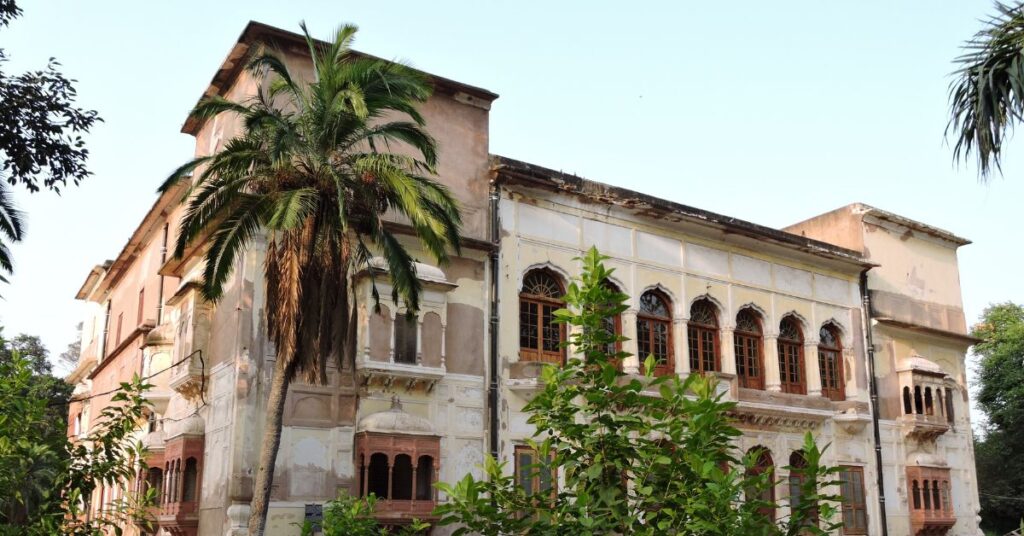
Rambagh Palace is a magnificent heritage hotel located in the heart of Amritsar, originally built as a royal residence for the Maharaja of Bahawalpur in the 19th century. Set amidst lush gardens and manicured lawns, the palace exudes grandeur and opulence, with its palatial architecture, ornate interiors, and regal furnishings. Today, it offers guests a luxurious retreat steeped in history and heritage, with elegantly appointed rooms, world-class amenities, and warm hospitality. Rambagh Palace is not just a hotel but a living testament to Punjab’s royal legacy, where guests can experience the splendor and romance of a Royal Life.
Local Experiences:
Embrace the Spirit of Seva (Selfless Service): Partake in the langar at the Golden Temple, a humbling tradition where volunteers serve free meals to all visitors, fostering a sense of community and equality.
Witness the Reverence: Be captivated by the Palki Sahib ceremony, an evening procession where the holy Guru Granth Sahib is carried in a palanquin from the Akal Takht to the Golden Temple’s sanctum, a sight that embodies devotion.
Dive into the Bustling Heart: Explore the vibrant streets of the Old City, a maze of narrow lanes overflowing with colorful markets. Lose yourself amidst stalls brimming with traditional Punjabi attire, handcrafted souvenirs, and mouthwatering local delicacies.
Unravel Hidden Gems: Embark on a heritage walk, unearthing architectural wonders and historical landmarks like the Durgiana Temple, Jallianwala Bagh, and the Partition Museum with a knowledgeable guide.
Tantalize Your Taste Buds: Indulge in the culinary delights of Punjab. Savor the iconic Amritsari Kulcha, savor the earthy goodness of Makki di Roti with Sarson da Saag, and cool down with a refreshing lassi at renowned eateries or hidden dhabas.
Shop Like a Local: Hunt for treasures at vibrant bazaars like Hall Bazaar and Guru Bazaar. Find exquisite Phulkari embroidery, traditional juttis (footwear), and intricate brassware to add a touch of Punjab to your home.
Witness Patriotism in Action: Feel the electrifying energy at the Wagah Border Ceremony. Witness the synchronized military drills and the flag-lowering rituals between India and Pakistan, a display of national pride.
Explore on Two Wheels: Hop on a cycle rickshaw, a quintessential Amritsar experience. Let the local rickshaw pullers guide you through bustling streets and hidden corners, offering a unique perspective of the city.
Escape to the Countryside: Venture beyond the city limits to experience rural life. Visit local farms and orchards, learn about traditional agricultural practices, and savor the taste of fresh, seasonal fruits straight from the source.
Immerse Yourself in Culture: Be mesmerized by vibrant Punjabi folk performances. Witness the energetic Bhangra and graceful Gidda dances, accompanied by lively music that will leave you tapping your feet.
Become a Culinary Master: Unleash your inner chef with a Punjabi cooking class. Learn the secrets behind classic dishes from local culinary experts, and savor the delicious creations you’ve made with your own hands.
Travel tips:
Respecting Religious Sites:
- Dress modestly: When visiting the Golden Temple, Durgiana Temple, and other religious sites, opt for clothing that covers your shoulders and knees. Scarves are usually available at entrances if needed.
- Maintain serenity: Silence is appreciated within religious spaces. Refrain from loud conversations and disruptive behavior.
- Photography etiquette: Not all areas allow photography. Be mindful of posted signs and ask permission before taking photos, particularly of individuals engaged in prayer.
Temple Etiquette:
- Footwear off: Entering religious sites requires removing your shoes. Most places have storage facilities for a small fee.
- Langar with respect: The Golden Temple’s Langar (community kitchen) offers a unique experience. Sit cross-legged on the floor, wash your hands before entering the dining hall, and follow the serving protocol with respect.
Weather Awareness:
Amritsar’s climate varies. Pack accordingly:
- Summer (April-June): Expect hot weather. Light, breathable clothing and comfortable shoes are key.
- Winter (December-February): The temperature drops. Pack layers and consider a warm jacket for evenings.
Navigating the City:
- Local transportation: Auto-rickshaws, cycle-rickshaws, and taxis are convenient options. Negotiate fares clearly before boarding auto-rickshaws and taxis to avoid misunderstandings.
Savoring the Cuisine:
- Indulge safely: Amritsar boasts a vibrant culinary scene. Prioritize hygiene by opting for reputable restaurants. Avoid uncooked street food to minimize the risk of stomach upset.
Communication:
- Languages spoken: Punjabi and Hindi are widely spoken, but English is understood in tourist areas and larger establishments. Learning a few basic phrases can enhance your experience.
Safety First:
Amritsar is generally safe for tourists. However, staying vigilant is essential:
- Be cautious in crowded areas, where petty theft can occur.
- Keep your belongings secure, especially valuables like wallets and phones.
- Avoid venturing into isolated areas, particularly at night.
Cultural Sensitivity:
- Respect local customs and traditions. Dress modestly, especially near religious sites.
- Seek permission before photographing people, especially women and during religious ceremonies.
Conclusion
Unveiling a captivating blend of ancient heritage and vibrant local life, Amritsar enthralls visitors with its rich tapestry of history, spirituality, and cultural richness. Explore everything from the serene Golden Temple to the poignant Jallianwala Bagh with Xplro.com, your one-stop travel guide. Immerse yourself in the essence of Punjab with mouthwatering cuisine, bustling markets overflowing with treasures, and the warmth of Punjabi hospitality. Witness the electrifying Wagah Border Ceremony, delve into historic forts and museums, or savor the explosion of flavors in traditional Punjabi cuisine – Amritsar promises an unforgettable journey into the heart of Sikhism and Indian culture. As you embark on your Amritsar adventure, embrace the city’s spiritual ambiance, respect local customs, and cherish the unique experiences that make this city a true gem of Northern India. Let Xplro.com guide you on an unforgettable exploration
FAQs
- Q: What is the best time to visit Amritsar?
- A: The best time to visit Amritsar is from October to March when the weather is pleasant and ideal for sightseeing.
- Q: How do I reach Amritsar?
- A: Amritsar is well-connected by air, rail, and road. The Sri Guru Ram Dass Jee International Airport serves flights from major cities in India and abroad. The Amritsar Junction railway station is a major stop on the Northern Railway network, and buses ply regularly from nearby cities.
- Q: What are the must-visit attractions in Amritsar?
- A: Key attractions include the Golden Temple, Jallianwala Bagh, Wagah Border Ceremony, Durgiana Temple, and the Partition Museum.
- Q: What should I wear when visiting religious sites like the Golden Temple?
- A: Visitors are advised to dress modestly and cover their heads. Scarves are available at the temple entrances for this purpose.
- Q: Can I visit the Golden Temple at night?
- A: Yes, the Golden Temple is open 24 hours a day. Visiting during early morning or night offers a serene experience with the temple illuminated beautifully.
- Q: How long should I plan to visit the Wagah Border Ceremony?
- A: Plan to arrive at least an hour before the ceremony starts to secure a good viewing spot. The ceremony itself lasts around 45 minutes.
- Q: What are the local dishes I must try in Amritsar?
- A: Amritsari Kulcha, Makki di Roti with Sarson da Saag, and lassi are must-try dishes in Amritsar.
- Q: Is it safe to eat street food in Amritsar?
- A: Exercise caution with street food. Stick to reputable vendors and avoid uncooked or improperly prepared food to prevent stomach issues.
- Q: Are there guided tours available in Amritsar?
- A: Yes, guided tours are available for attractions like the Golden Temple, Jallianwala Bagh, and the Wagah Border Ceremony, providing historical insights and local perspectives.
- Q: What are the shopping options in Amritsar?
- A: Explore markets like Hall Bazaar and Guru Bazaar for Punjabi attire, handicrafts, and souvenirs like Phulkari embroidery and traditional juttis (footwear).
- Q: Can I visit the Durgiana Temple?
- A: Yes, the Durgiana Temple is open to visitors of all faiths. Follow respectful behavior and remove your shoes before entering.
- Q: Is photography allowed at the Golden Temple?
- A: Photography is generally allowed at the Golden Temple complex, but avoid photographing worshippers without permission and follow guidelines for respectful behavior.
These FAQs provide essential information for travelers planning a visit to Amritsar, ensuring a smooth and enriching experience in this culturally rich city of Punjab.
3.5
make it plag freeChatGPT
Certainly! Here are 12 FAQs with original answers about visiting Amritsar, Punjab:
- When is the best time to visit Amritsar?
- The best time to visit Amritsar is from October to March, when the weather is pleasant and suitable for sightseeing.
- How can I reach Amritsar?
- Amritsar is well-connected by air, rail, and road. The Sri Guru Ram Dass Jee International Airport serves domestic and international flights. The Amritsar Junction railway station is a major hub on the Northern Railway network, and buses are available from nearby cities.
- What are the top attractions in Amritsar?
- Key attractions include the Golden Temple, Jallianwala Bagh, Wagah Border Ceremony, Durgiana Temple, and the Partition Museum.
- What should I wear when visiting religious sites like the Golden Temple?
- It’s advisable to dress modestly and cover your head when visiting religious sites. Scarves are available at the temple entrances for visitors.
- Can I visit the Golden Temple at night?
- Yes, the Golden Temple is open 24 hours. Visiting during early morning or night offers a serene experience with the temple beautifully illuminated.
- How long should I plan to visit the Wagah Border Ceremony?
- Plan to arrive at least an hour before the ceremony starts to secure a good viewing spot. The ceremony itself lasts around 45 minutes.
- What are the local dishes I must try in Amritsar?
- Don’t miss trying Amritsari Kulcha, Makki di Roti with Sarson da Saag, and lassi, which are iconic dishes of the region.
- Is it safe to eat street food in Amritsar?
- Exercise caution with street food. Stick to reputable vendors and avoid uncooked or improperly prepared food to prevent stomach issues.
- Are guided tours available in Amritsar?
- Yes, guided tours are available for attractions like the Golden Temple, Jallianwala Bagh, and the Wagah Border Ceremony, providing historical insights and local perspectives.
- What are the shopping options in Amritsar?
- Explore markets like Hall Bazaar and Guru Bazaar for Punjabi attire, handicrafts, and souvenirs such as Phulkari embroidery and traditional juttis (footwear).
- Can I visit the Durgiana Temple?
- Yes, the Durgiana Temple welcomes visitors of all faiths. Remember to remove your shoes before entering and respect the religious customs.
- Is photography allowed at the Golden Temple?
- Photography is generally permitted at the Golden Temple complex. However, be respectful and avoid photographing worshippers without permission.




